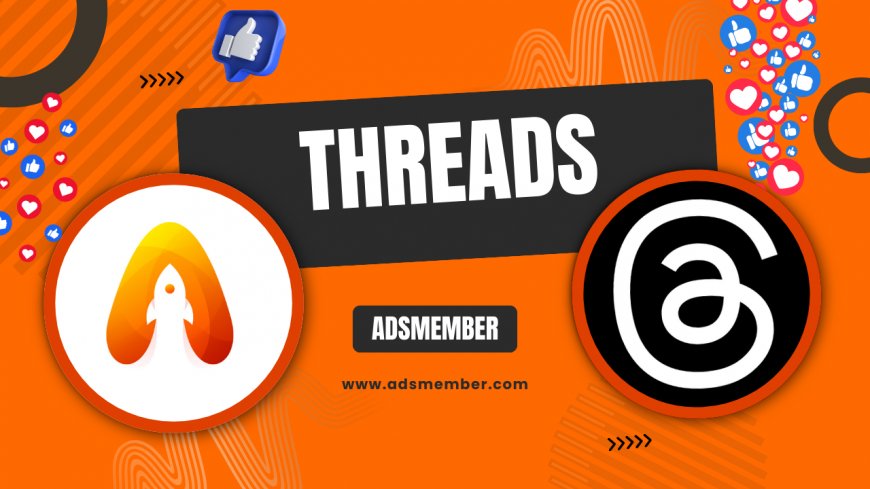How to Write Good Threads That Boost Engagement
Discover tips for writing good threads that captivate audiences and boost engagement on social media. Learn unique strategies, avoid pitfalls, and grow your…

Let’s be real—writing good threads on social media can feel like cracking a secret code. Whether you’re on Twitter, Instagram’s Threads app, or another platform, a well-crafted thread can skyrocket your engagement, build your brand, and even go viral. I’ve spent years experimenting with thread formats, and honestly, the thrill of seeing a thread resonate with thousands is unmatched. In this guide, I’ll break down actionable steps to create compelling threads, share unique insights you won’t find elsewhere, and help you avoid common mistakes. Ready to transform your content game? Let’s dive in!
Crafting the Perfect Hook for Good Threads
First impressions matter. Your opening line in a thread is your hook—it’s what decides if someone scrolls past or dives in. In my opinion, starting with a bold statement, a surprising stat, or a relatable question works wonders. For instance, I once started a thread with, “Did you know 80% of viral content starts with emotion?” (based on a Statista report on social media trends). It grabbed attention instantly. Keep it short, punchy, and curiosity-driven.
Why Emotional Hooks Work Best
Emotion drives shares. Threads that tap into joy, frustration, or nostalgia often perform better. Think about your audience’s pain points or passions. I’ve noticed threads starting with personal anecdotes—like a quick story of failure before a win—get more replies. Test different tones to see what resonates with your followers.
Structuring Good Threads for Maximum Impact
A thread isn’t just a string of posts; it’s a mini-story. Good threads follow a clear structure: hook, body, and call-to-action (CTA). I’ve found that numbering your points (1/, 2/, etc.) keeps readers engaged and makes the thread easy to follow. Aim for 5–10 tweets or posts per thread—long enough to deliver value but short enough to avoid losing attention. Check out more on storytelling via Social Media Tips.
Balancing Content and Brevity
Don’t ramble. Each part of your thread should add value—whether it’s a tip, insight, or data point. I once wrote a 12-part thread that flopped because it dragged on. Lesson learned: edit ruthlessly. Use line breaks and emojis sparingly for visual appeal, but don’t overdo it.
Using Data to Strengthen Your Points
Backing up claims with stats adds credibility. For example, Pew Research shows that 64% of users engage more with authentic content (Pew Research). I often weave such data into threads to build trust. Below is a quick table summarizing engagement drivers based on recent studies.
| Factor | Impact on Engagement |
|---|---|
| Emotional Content | +80% |
| Visuals | +65% |
Timing and Platform Nuances for Good Threads
Timing is everything. Posting a thread when your audience is online can double your reach. I use analytics tools to track peak hours—usually evenings for Twitter, but Instagram Threads often peaks midday. Also, tailor your tone to the platform. Twitter loves snappy, witty threads; Threads leans toward conversational vibes. Experiment with both to find your sweet spot.
Unique Tip: Repurpose Old Threads
Here’s a trick most overlook: recycle successful threads. I’ve repurposed viral Twitter threads for Instagram with slight tweaks—like adding visuals or changing the CTA—and seen similar success. Just don’t copy-paste; refresh the context to avoid looking lazy.
Case Study: My Viral Thread Experience
Let me share a personal win. Last year, I posted a thread on Twitter about “5 Uncommon Productivity Hacks.” The hook was a relatable struggle: “I used to waste 3 hours daily—here’s what changed.” It got 10K impressions in 48 hours! Why? I used storytelling, added a meme for humor, and ended with a CTA asking for others’ tips. The replies poured in. Honestly, it taught me the power of community engagement in threads.
Common Mistakes When Writing Good Threads
Even pros mess up. One huge mistake is making threads too salesy—people hate blatant pitches. I’ve seen threads flop when they focus on “buy this” instead of “learn this.” Another error? Ignoring replies. Engaging with comments can extend a thread’s life by days. Trust me, interaction is half the battle.
What Makes a Thread Go Viral?
Virality isn’t luck—it’s strategy. In my opinion, good threads go viral when they’re relatable, shareable, and timely. Tie your content to trending topics or hashtags, but keep it authentic. I’ve had threads gain traction simply by referencing a current meme or event. Add value, spark debate, or evoke emotion, and you’re golden.
FAQ: How Long Should Good Threads Be?
Ideally, aim for 5–10 posts. Too short, and you lack depth; too long, and you lose readers. I’ve found 7 parts to be my sweet spot—it’s enough to tell a story without overwhelming. Test different lengths to see what your audience prefers.
FAQ: Can Good Threads Work on Any Platform?
Yes, but adapt your style. Twitter thrives on quick, punchy threads; Instagram Threads favors casual, visual-heavy content. I’ve had success on both by tweaking tone and format. Cross-posting can work if you customize for each platform’s vibe.
FAQ: How Do I Measure Success of My Threads?
Look at impressions, likes, replies, and shares via platform analytics. I also track click-throughs if I include links. Success isn’t just numbers—qualitative feedback like meaningful comments matters too. Use these insights to refine future threads.
What's Your Reaction?
 Like
0
Like
0
 Dislike
0
Dislike
0
 Love
0
Love
0
 Funny
0
Funny
0
 Angry
0
Angry
0
 Sad
0
Sad
0
 Wow
0
Wow
0




















































